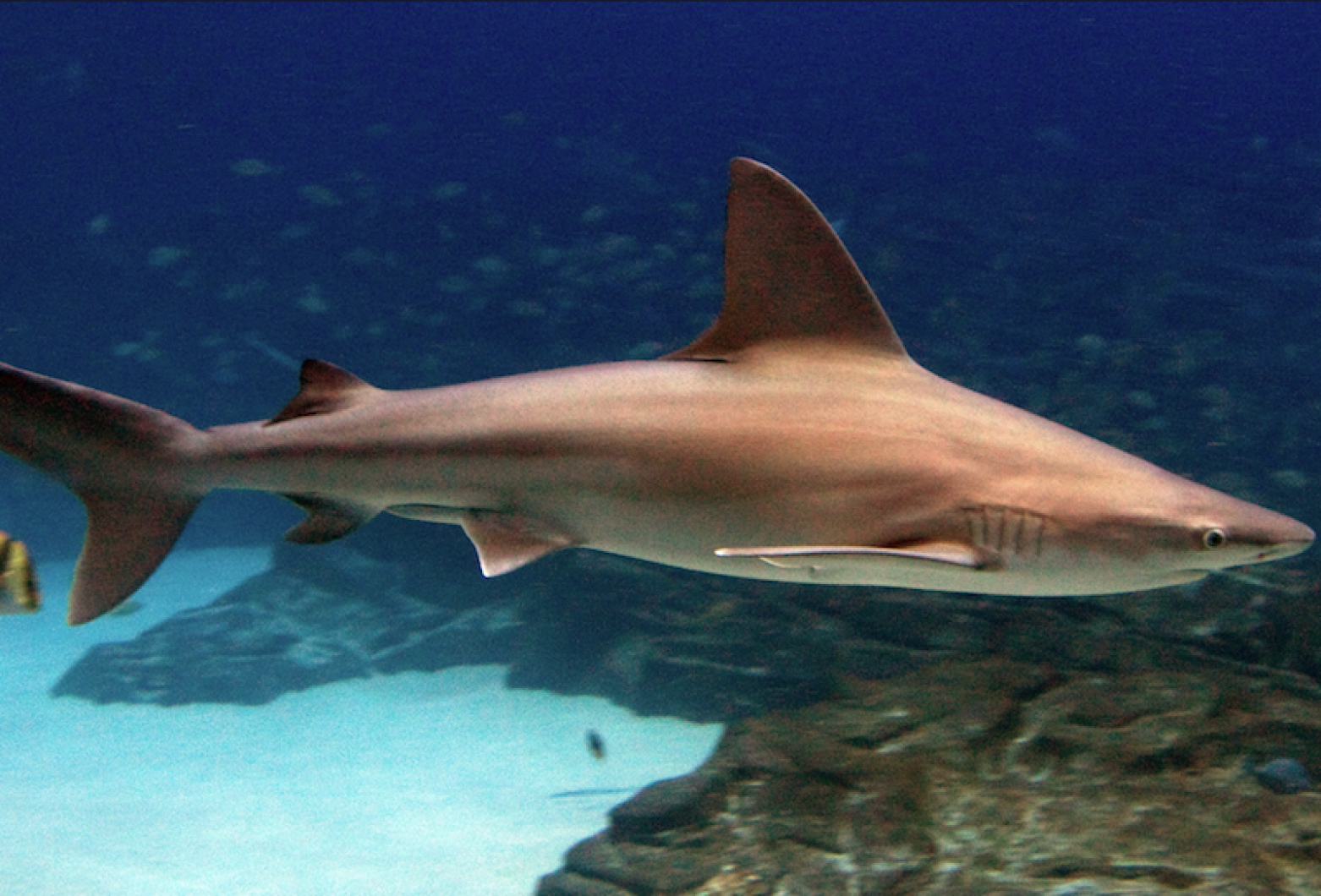In the case of the brown shark, you probably won’t ‘need a bigger boat.’
Brown sharks, also known as sand bar sharks, thick skin sharks and queriman sharks, are being seen and caught in local waters. Brown sharks are not considered dangerous to people at all. This harmless shark, though sizeable at eight feet, doesn’t come close to the more familiar great white shark in terms of bulk or behavior.
Great white sharks measure up to 20 feet and are more often involved in shark/human interactions. Consider that one-third to one-half of shark attacks on humans are by great whites. Even with those odds, there is not much to worry about. Actor Ted Danson describes your chances of death by shark this way: “Sharks are enormously powerful and wild creatures, but you’re more likely to be killed by your kitchen toaster than a shark!”
With those odds, perhaps consider replacing fear with wonder when you see a brown shark. Oceanographer Sylvia Earle explains, “If you’re lucky enough to see lots of them that means that you’re in a healthy ocean. You should be afraid if you are in the ocean and don’t see sharks.”
Brown shark sightings increase in the summer when these migratory animals swim up from more southern waters to feed. Massachusetts is at the northern range of the brown shark, which is seen near shore, along sand bars and in harbors, ponds and estuaries.
Identify them by their large and high dorsal fin, whose vertical height is greater than 10 per cent of its total body length. Its skin color ranges from gray to brown, and its head and snout are very discernible. The brown shark’s scientific name, Carcharhinus plumbeus, translates into ‘sharpened nose of lead coloring.’
Another unique characteristic of the brown shark is its ability to birth live sharks. Every two to three years, the female (usually the larger of the sexes) has up to a dozen pups. Keep an eye on her if you are her companion, since she is polygynandrous, which means she mates with multiple partners.
It can take up to 13 years for these sharks to reach sexually maturity. Combine that fact with the predilection of humans for hunting and a taste for shark fin soup to create a challenging situation for these placid predators. They are listed as vulnerable by the International Union for Conservation of Nature (IUCN). Instead of preying on people, brown sharks’ preferred meal includes fish, rays, crabs, octopus, squid and snails, among other bottom-dwelling creatures.
Remember that these gentle sharks mean you no harm and are, in fact, one of the very vital creatures of the ocean. To see it another way, take Jaws author Peter Benchley’s view. He notes that “We provoke a shark every time we enter the water where sharks happen to be, for we forget: The ocean is not our territory — it’s theirs.”
Suzan Bellincampi is director of the Felix Neck Wildlife Sanctuary in Edgartown, and author of Martha’s Vineyard: A Field Guide to Island Nature.






Comments
Comment policy »